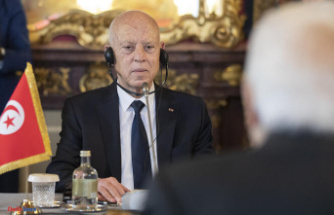"Approach the Spanish public an ignored story about Ibero-American art." About this premise is erected exposure to Tornaviaje. Ibero-American art in Spain, which reaches the Prado Museum to present the trafficking of artistic works between Spain and Latin America after the conquest of the new continent through more than a hundred works.
"The main thesis of the exhibition is to tell the Spanish public a story that ignores: that artistic traffic is not unidirectional as they had told us, but it consists of a two-way flow," said the director of the National Museum this morning. From the meadow, Miguel Falomir, on the sample, which he intends "that the public becomes familiar with viceregal art."
After the conquest of America and even independence they arrived in Spain "more objects from America than from Italy or Flanders," and they did it in a bidirectional flow, which becomes the thread that the exposure takes, whose opening was scheduled for the Last year and was postponed due to the health crisis. "It's not that this stage has been less studied, but it is less known for citizenship in general," explains the Commissioner of the Sample, Rafael López Guzmán, professor of History of Ibero-American Art at the University of Granada.
"They are works that arrived at the viseinal period, especially in the modern age, and that little by little they have lost the history of their story: why they came, what their functions or their origin," he explains about the works, many of them Belonging to the old royal collection, next to which they were exhibited in the same palaces as works by Rubens or Velázquez. It is precisely in this way as the pieces "have been mixed with our heritage", a starting point for which the meadow aglutines these works in order to offer a more complete vision of the circulation of these artistic objects, which "no They enjoyed a specific specificity when it comes to being studied "and that they are now gathered at a wide group with" a complete meaning ".
Elaborated by mestizo or indigenous artists, objects have unknown materials, thematic and techniques that speak from the "identity aspirations of criolla elites" to documentary motivations, devotional and aesthetics, and that reach the meadow after a meticulous four-year work . "The exhibition is divided into four thematic areas that play with the concept of Tornaviaje," explains the Commissioner on the structure of the sample. In the exhibition, which will remain in the rooms A and B of the Jerónimos building until February 13, visitors can observe a total of 107 works, of which 26 have been restored for the occasion.
In a story that gives to know the culture of American vicerinates, putting on emphasis "their iconographic and symbolic values", in addition to those who granted them the recipient societies, the sample is articulated around four different sections. "First we analyze the American geography and how it was organized, taking into account the conquest process," explains López Guzmán about the first part, geography, conquest and society, in which the biombo of the conquest of Mexico and the very noble and Leal Mexico City (1675-1692), which reflects "the ideology of criollas elites".
The second section, images and cults of round trip, talks about "the devotional elements that go and come from America", an axis in which the cult and catechization charges a great role, since "justified the conquest at the ideological level ", and whose section emphasizes the work Santa Rosa de Lima de Murillo.
The third part corresponds to the cruises of art, which serve "those objects that come from America. From private civil ajuars to ecclesiastical", and in which the commissioner stands out the observer, silver with rhinestone and incrustations that, dated of principles From the XVIII, it is "the first time it is exposed publicly due to its great value."
The last section, Indiana imprint, talks about "hybridization between cultural elements, configuring" a more plural art history, where the pieces carried out with the crockery technique, "an art performed with shells halfway between painting and The artisanal work ".
Date Of Update: 08 October 2021, 20:52











